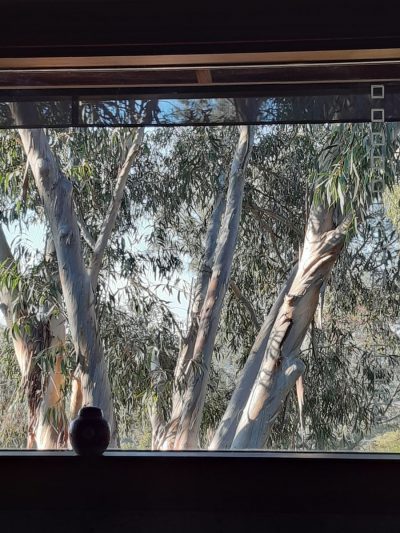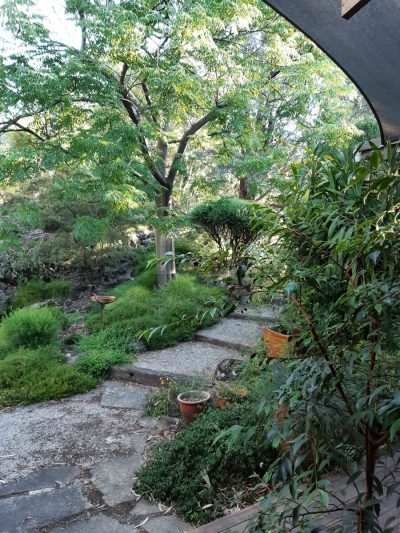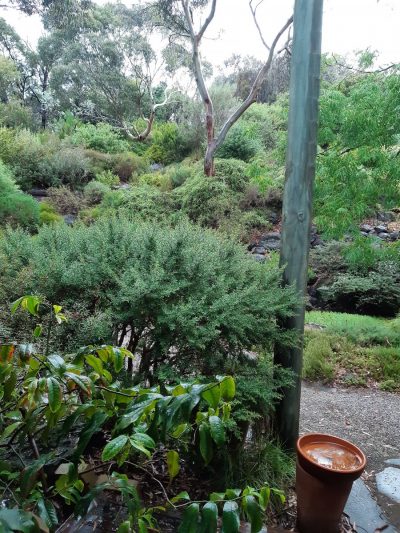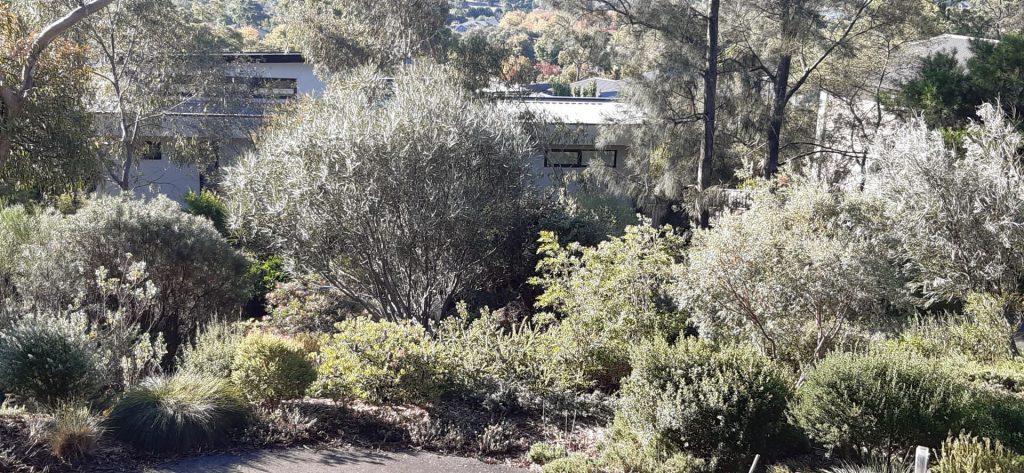I am fortunate to have a lot of large windows drawing my attention to what is going on outside, from the sky to the garden that surrounds the house.
Hot days, cold days, windy, wet, illness and housework days sometimes we need or chose to stay inside our homes, but we can remain connected to what is going on outside as we look out our windows.
Looking outside when the afternoon light, of a good sunset or most particularly that honey-coloured, golden light transforms the foliage I might even leap up and go outside to wander around and wonder at all that beauty.
From one of my windows I can spy on some of the visiting wildlife: birds, lizards, the occasional welcome echidna and unwelcome cat.
Recently I moved a very shallow birdbath to a position beside a south facing deck and waited to see if it was getting too close to the house for comfort or not. Soon it was being visited by a range of small birds such as scrub wrens, eastern spinebills, grey fantails, thornbills, pardalotes and New Holland honeyeaters. Their lack of fear in coming in so close was partly due to the safety provided by a small shrub close by giving them cover for entry and a quick escape route. There is a lesson here for how to protect small birds accessing water in a garden.


The health benefits of gardening, being in a nature, or being able to connect visually with the natural world, have been well researched.
During Covid people found relief from anxiety if they could take a walk in a park or reserve. I am sure there are great health benefits in hospitals and nursing homes with windows overlooking gardens or with views of treetops. The response to our environment, built or otherwise, is an emotional one completely bypassing the analytical brain.
How our environments are arranged or designed is a deliberate, calculated activity that will result in eliciting an emotional response. As agents of our own garden design we have the opportunity to deliberately choose the style of our home gardens to give us comfort and pleasure.
One thing to think about before committing to changes in hard landscaping, or even choosing and positioning a plant is whether views out into your garden will be affected by any changes you make.
If the answer is yes, then it is time to include this factor, as one of the things to consider before making any final decisions. Try to visualise what you will see from inside the house if you make that particular change? Will it improve the view and give you more pleasure?
Windows can frame a simple view like the framing of eucalypt trunks from my kitchen window. Because I can see between the trunks this tree is not blocking the view into my garden, but it provides a depth of field.
Plants can also frame a view beyond the window frame, perhaps drawing your eye down a garden path.
It is common for lawns to extend a view you might see from a window, but to see a long way into the garden space you could choose to use ground covering plants and small shrubs instead.
Visual corridors can be organised within or across garden beds by also using ground covering plants or small shrubs between taller framing plants.
When it comes to views of neighbouring buildings, fences etc it is may be possible to block out the view entirely with a wall of foliage or a hedge.
Be aware though, if one of the plants in a hedge composed of all the same species dies then it is not any easy problem to solve.
Alternatively, the sight of the hard structure can be partially hidden by plants that distract and soften the outlook.


